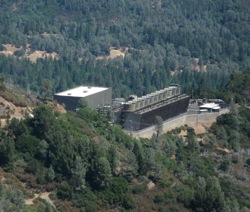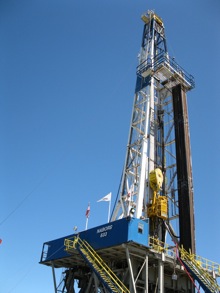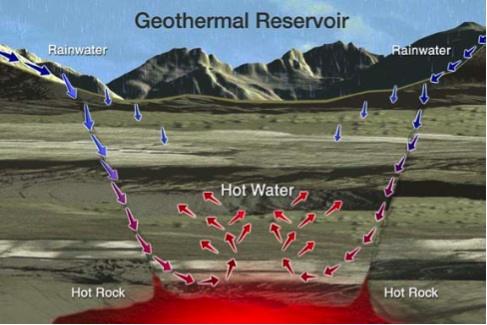UPDATED with interactive map
Hear my radio feature on geothermal energy and the rest of a five-part collaboration on renewable energy between NPR and KQED, on NPR’s Morning Edition.
It may be a distant second to California now, but Nevada is making a run to become the nation’s largest producer of geothermal energy.

California still produces an estimated 80% of the nation’s geothermal power (used to produce electricity*), with more than 40 plants online. But according to a summary from the Geothermal Energy Association (GEA) this summer:
“Nevada could become the leading geothermal energy producer in the coming years if growth and production trends continue on their current trajectories. Nevada’s 86 planned or developing geothermal power plants have the potential add up to 3,686.4 Megawatts of geothermal power to Nevada’s energy portfolio, power for 2.6 million homes – enough to meet the electricity needs of 100% of the homes in the Las Vegas metropolitan area.”
GEA describes 14 Nevada projects as being “in latter stages of development.” Meanwhile, says the group’s executive director, Karl Gawell, development in California is slowing down. “Everything’s relative,” Gawell told me in a phone interview. “Projects are moving forward in California, they just take longer.”
The main reason is a familiar refrain among energy resource developers: California’s environmental review process is, in Gawell’s words, “much more elaborate.” He says Nevada’s “environmental assessment” process can be navigated in less than six months, with a cost per project of about $30,000, while clearing environmental hurdles in California is likely to take two years for a single project, with related costs running into the millions.
This hasn’t prevented cutting-edge geothermal projects from attracting investments from major venture capital firms and even Google, whose non-profit arm is funding at least two Bay Area firms, AltaRock Energy and Potter Drilling. Bill Weihl, Google’s “Green Energy Czar,” told me in a recent interview that he believes advanced geothermal technology is not only scalable globally, but could eventually produce almost unlimited clean power at a cost competitive with coal.

AltaRock, a pioneer of “enhanced” or “engineered” geothermal, the next-generation technology that uses deep drilling to reach hot rocks at depths of more than two miles, gave up on its California pilot project last year and is pursuing a new project near Bend, Oregon. The company says that decision was driven more by geology than bureaucracy.
Gawell says the other factor putting a drag on California development is the network of electrical transmission lines, which he describes as “a mess.” Gawell points to the rich geothermal reserve lying under desert land near California’s Salton Sea, where, he says, there remains a potential 3,000 megawatts of energy with no way to get it to the population centers of Southern California. Gawell calls transmission planning in California a “piecemeal process” which “doesn’t work.”
Gawell says it doesn’t make sense to have 5-6,000 MW of coal-powered electricity coming in to California from neighboring states on existing lines, when those lines could be carrying renewable energy.

*While geothermal power is used around the world for various purposes, it’s currently used to generate electricity in nine US states.
The map below marks states with existing geothermal projects as well as those states receiving federal stimulus funds for new ones.
View Geothermal Energy in Development and Stimulus Funding in a larger map
See and hear some of KQED’s previous reporting on geothermal energy from our Quest Radio and TV units.
3 thoughts on “Clean Energy from Below”
Comments are closed.

Geothermal is not renewable, at least not on the time scale of human affairs. It is a misnomer to refer to it that way. We can collect solar energy every day and the next day the sun will shine just as brightly. That is renewable. In contrast, when heat is pulled out of the earth, it is not replaced immediately. That is one reason production from the Geysers field has been steadily declining.
Geothermal resources are renewable and can be managed and sustained. Furthermore, they can operate 24/7/365, unlike some other renewables. The earth has been hot for nearly 5 billion years and will not be cooling off anytime in the foreseeable future.
We are probably nitpicking here. Clearly, the earth as a whole is an essentially unlimited source of heat. However, locally, where the heat is being tapped, the supply can be exhausted, and can require a long time (decades, centuries) to renew.
I wonder if there would be unforeseen consequences if it became very common to tap geothermal sources. Just as once, we could never have imagined that human activity could affect the global climate, I wonder if similar problems might arise with really rampant use of geothermal. However, that is a completely theoretical problem for the future. Right now, it is clear that geothermal is an attractive source of clean energy that is available 24 hours a day.